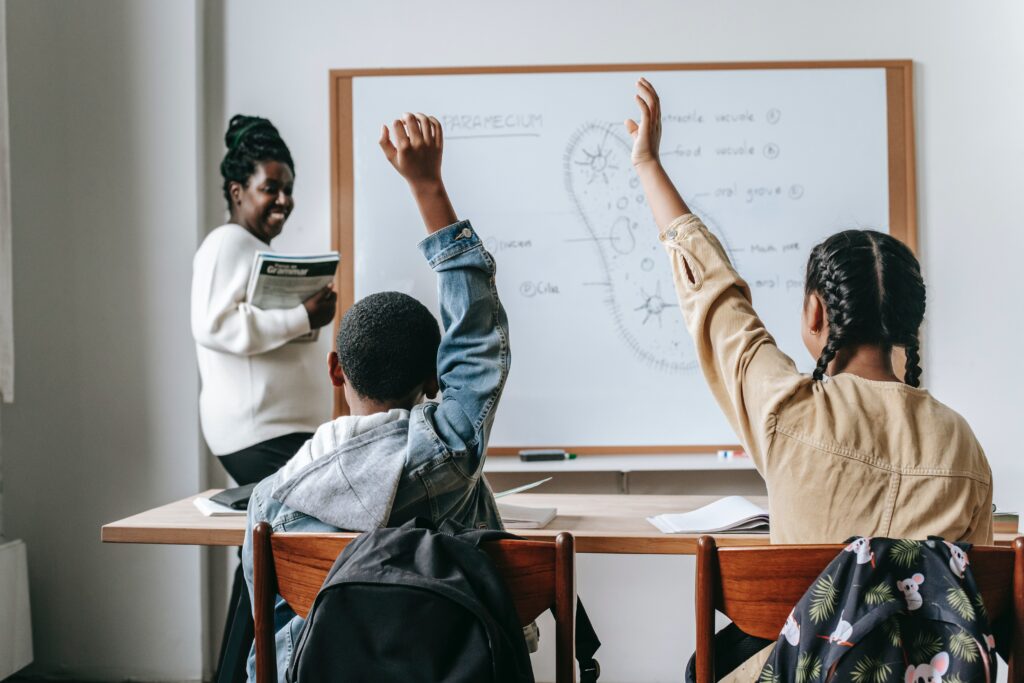Are you an international teacher considering working in a British classroom? Or maybe you’re UK-based and want to learn more about teaching styles? Either way, this blog post is for you! We’ll take a deep dive into the inner workings of British classrooms as we explore strategies, structures, activities and teaching styles that educators across the UK are using every day. From outlining expected behaviours to creating interactive lessons, discover how teachers in Britain are transforming their classrooms to make learning more engaging for their students!
Overview of the British School System
The British School System is a complex and fascinating one. It incorporates a wide range of education systems, from primary school through to university. At its core, the system is designed to provide students with an education that is tailored to their individual needs and abilities. This means that students are encouraged to develop their interests and passions, while also learning the necessary skills to succeed in life. The British School System is highly respected around the world for its quality of education, and the opportunities it affords its students. Whether you’re a student, parent, or educator, there’s a wealth of information and expertise to be gained from exploring this fascinating and dynamic system.

Traditional Teaching Methods in British Schools
In British schools, traditional teaching methods have been relied upon for generations. These methods involve a teacher-centered approach where the teacher presents information to the students in a lecture-style format and assigns textbook readings for homework. However, in recent years, there has been a movement towards more student-centered learning where students take a more active role in their education. Supporters of traditional teaching methods argue that they are efficient and effective, while critics argue that they can be boring and fail to engage students. Despite the ongoing debate, it remains to be seen whether traditional teaching methods will continue to dominate British classrooms or if student-centered approaches will eventually become the norm.
Emphasis on Academic Excellence and Competition
In today’s society, the importance of academic excellence and competition cannot be overstated. With an increasing demand for skilled professionals in various fields, education has become a crucial component for success. Institutions emphasising academic excellence are providing an environment that fosters the intellectual growth of students and cultivates their potential to become future leaders. Competition among students further pushes them to perform better, set higher goals and strive for their best. Although healthy competition can be both motivating and rewarding, institutions should also ensure that students have access to resources and support to help them achieve their academic goals. By emphasising academic excellence and competition, institutions are preparing their students for a world that demands talented and innovative individuals who are driven to succeed.
Innovative Teaching Strategies for Engagement and Creativity
Exploring innovative teaching strategies is essential for creating an engaging and creative classroom environment. Educators are constantly seeking new ways to inspire their students and foster a love of learning, and innovative teaching techniques are key to achieving this goal. From project-based learning to gamification and beyond, there are many exciting approaches that educators are using to promote creativity, critical thinking, and collaboration among students. By embracing new ideas and experimenting with innovative teaching strategies, teachers can help their students develop essential skills for success and stay motivated and engaged throughout the learning process.
Impact of Technology in the Classroom
The introduction of technology has significantly transformed the traditional classroom experience. Gone are the days of dusty chalkboards and bulky textbooks, as modern-day classrooms now feature interactive displays, educational software and online resources that make learning more engaging and accessible for students of all abilities. From tablets and laptops to virtual reality headsets, teachers now have a plethora of tools at their disposal to enhance their lessons and facilitate more interactive learning experiences. The integration of technology in the classroom has improved student engagement, increased collaboration, and helped students to develop essential digital literacy skills that will serve them well in the future. Despite some concerns, technology has undoubtedly had a positive impact on the classroom, and continued innovation in the field promises an even brighter future for education.

Incorporating Cross-Curricular Learning Activities
Incorporating cross-curricular learning activities in the classroom can be an effective way to engage students and encourage their creativity. By combining different subjects such as science, literature, and art, students can see how each subject is connected and how they can apply their knowledge to real-world situations. For example, having students read a historical novel and then create a diorama of a particular scene not only builds their reading comprehension skills but also their artistic abilities and understanding of history. By introducing cross-curricular activities into your lesson plans, you can foster a love of learning that extends beyond the classroom and prepare your students to be well-rounded individuals.
The British school system has put a great emphasis on academics and providing students with solid educational foundations to ensure they can develop the knowledge and skills necessary for navigating life. Despite traditional teaching methods still being a major component of many British schools, there are taught also innovative ways to encourage creative thought, engagement, and collaboration. Technology has provided both students and teachers the means to access digital resources for learning within and outside the classroom, allowing them to supplement their education with materials not typically found in textbooks. Finally, cross-curricular activities are helping bring unique perspectives between disciplines together while fostering an appreciation for various subjects offered in the British school system. This system is committed to providing quality education that helps ensure students have every opportunity to succeed in life.
